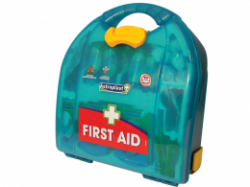 Lisa Driver, the 47-year-old mother of two has no recollections of the fall that made her an epileptic. Her friend Elaine Bristow remembers they were not drunk, although Mrs. Driver had consumed five Vodka and Cokes. When they were waiting for a taxi, Lisa went into the private car park of the Roman Painted House in Dover, looking for "somewhere to wee". She tripped and fell over a 2-feet high wall and fractured her skull. She later sued the Roman Painted House for £1 million, claiming that the site was dangerous. It was only last week, after almost 6 years of the accident that her claim was rejected and the Roman Painted House was absolved of the liability. The incident underlines the importance of maintaining safety in and around the workplace, regardless of how benign your line of work may be. Making first-aid arrangements is an essential part of health and safety around the workplace.
Lisa Driver, the 47-year-old mother of two has no recollections of the fall that made her an epileptic. Her friend Elaine Bristow remembers they were not drunk, although Mrs. Driver had consumed five Vodka and Cokes. When they were waiting for a taxi, Lisa went into the private car park of the Roman Painted House in Dover, looking for "somewhere to wee". She tripped and fell over a 2-feet high wall and fractured her skull. She later sued the Roman Painted House for £1 million, claiming that the site was dangerous. It was only last week, after almost 6 years of the accident that her claim was rejected and the Roman Painted House was absolved of the liability. The incident underlines the importance of maintaining safety in and around the workplace, regardless of how benign your line of work may be. Making first-aid arrangements is an essential part of health and safety around the workplace.
First Aid at Work - Everyone's Responsibility, but the Axe Usually Falls on the Employer
All employers, employees and first-aiders should be aware of the risk of accidents at their workplace and should actively participate in making the environment as safe and healthy as possible. The law requires even small offices with low to moderate accidents to have a first-aid box and make a person responsible for initiating the first aid procedures, should the need arise. These responsibilities may include keeping the first-aid box stocked, calling the emergency services, administering CPR, etc. Although the first-aiders are responsible for taking all the necessary steps once an eventuality takes place, it is up to the employers to foresee the type of accidents that their offices can be prone to, and formulate the emergency first-aid procedure accordingly. In case of an untoward incident, it's the employer's neck that might be in the noose most of the time.
First-Aiders at the Workplace - Certifications and Responsibilities
A first-aider is a person who has received adequate training for the kind of first aid that he/she will be administering under the prevailing circumstances. A person who is made responsible for first aid in the office must hold a valid HSE qualification in first aid at work or emergency first aid at work (EFAW). The EFAW qualification enables a person to dispense emergency first aid to someone who gets injured or becomes ill while at the office. The first aid at work training includes the EFAW curriculum as well as instructions for applying first-aid to a variety of specific illnesses and injuries. The certifications are issued for a period of three years, before completion of which period the first aider must undertake a qualification course for becoming certified for another three years. Annual refresher training is also recommended for all first-aiders in order to keep their skills sharpened. The number of first-aiders can vary largely depend upon the type of workplace in question. The law doesn’t specify a number for first-aiders, but the HSE assists employers in assessing their needs using an office first aid assessment tool. A number of other resources are also offered by HSE to enable employers to grasp their first aid needs and responsibilities. First-aiders are the first line of response when an accident happens at the office. An act of negligence or a mistake by a first-aider can result in the trauma being aggravated and the first-aider becoming liable for legal action. However, first-aiders are seldom the victims of direct lawsuits by aggrieved parties, who rather like to sue the employers. The employers should, therefore, stay abreast of the latest requirements for health, safety and first-aid around the office and make sure that only qualified personnel are appointed as first-aid crews.
Posted in Office, Health and Safety